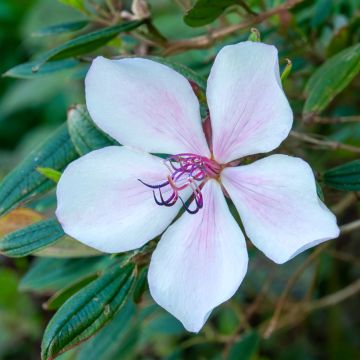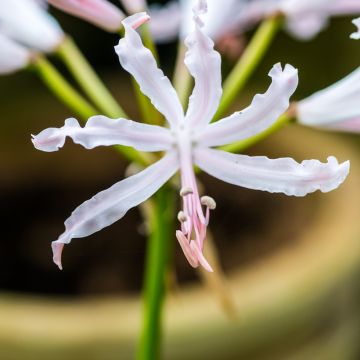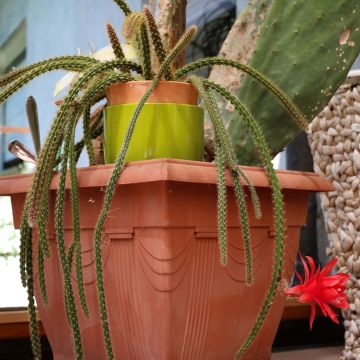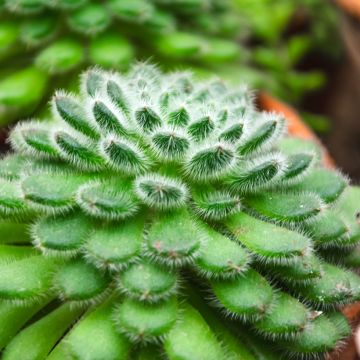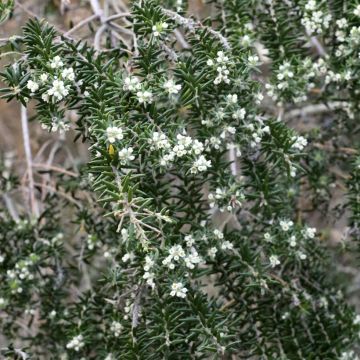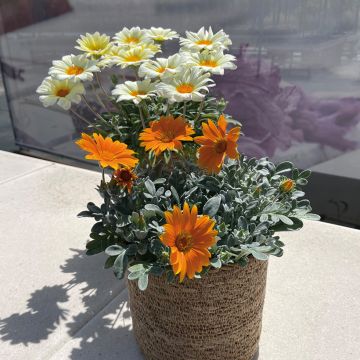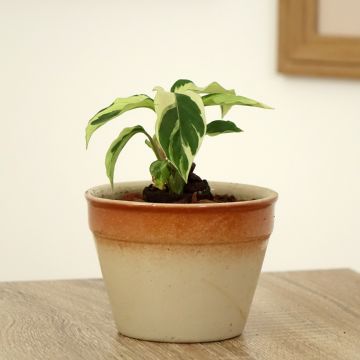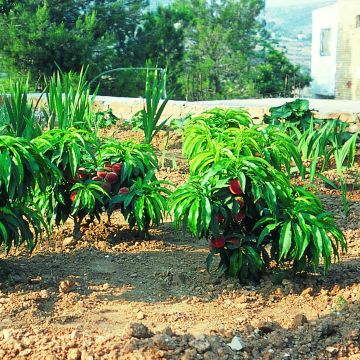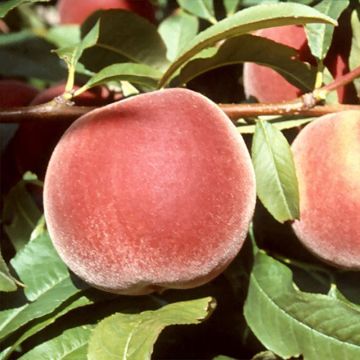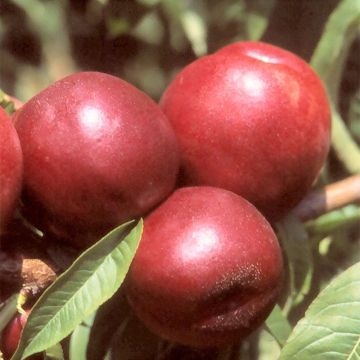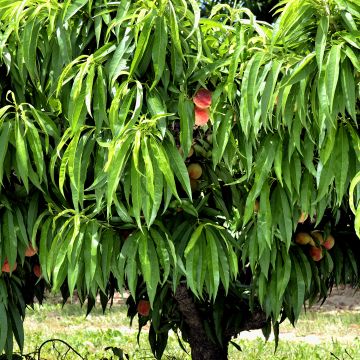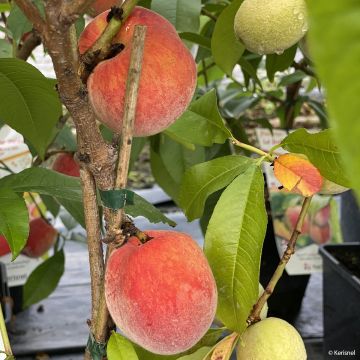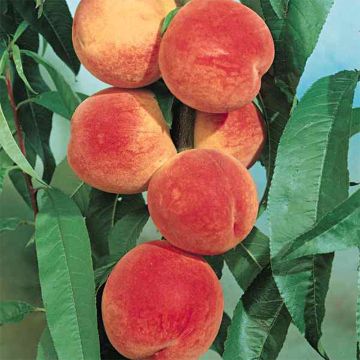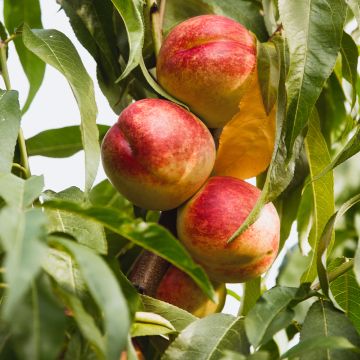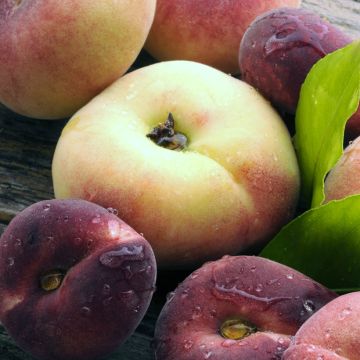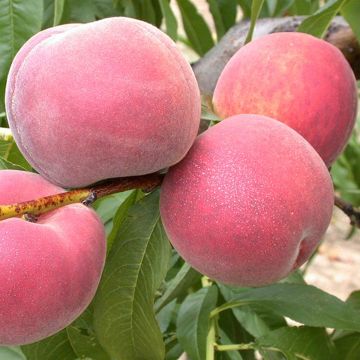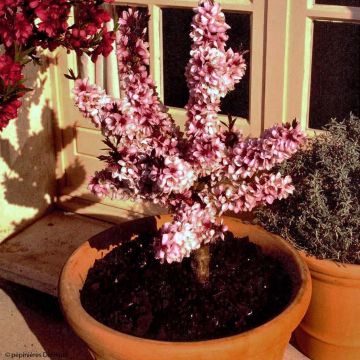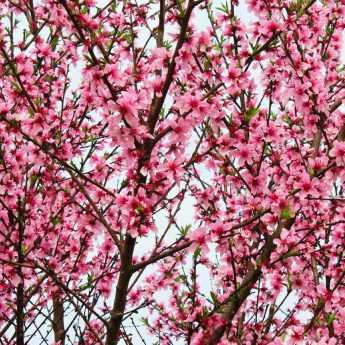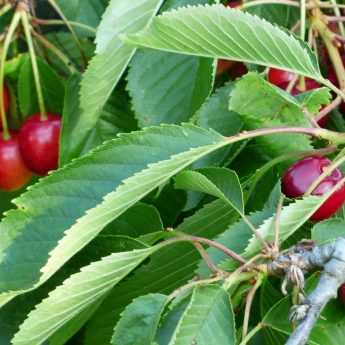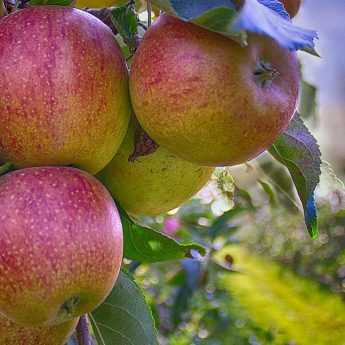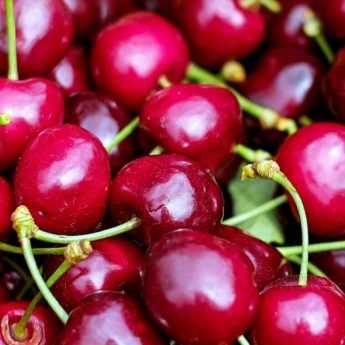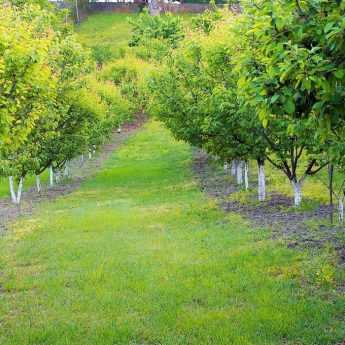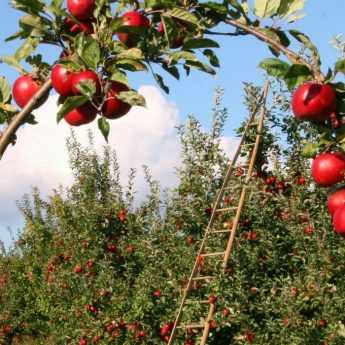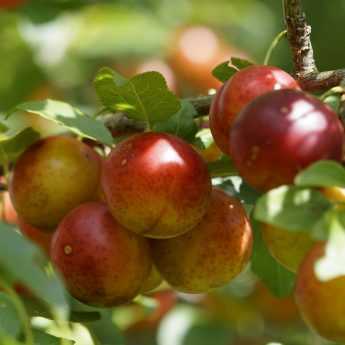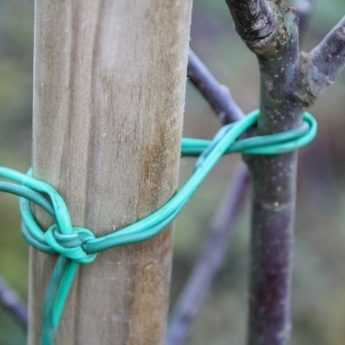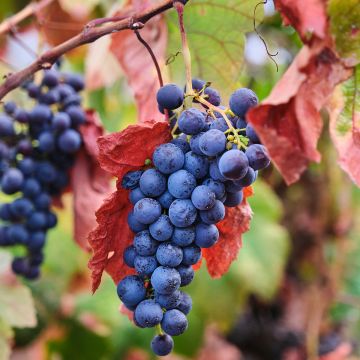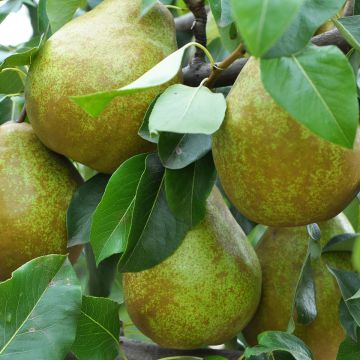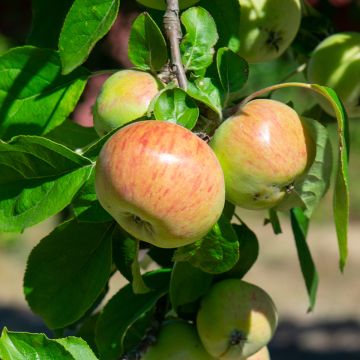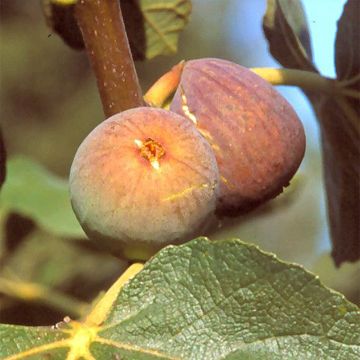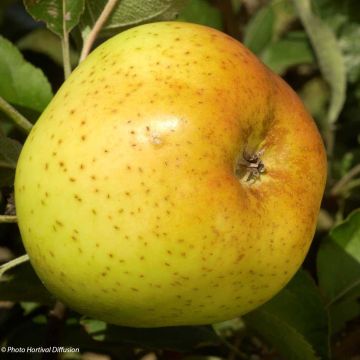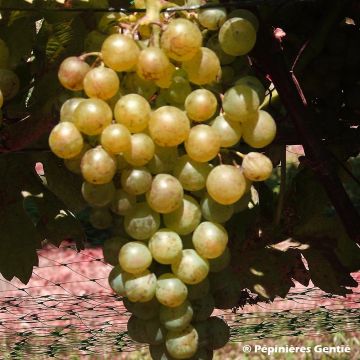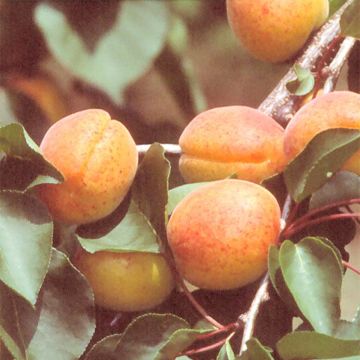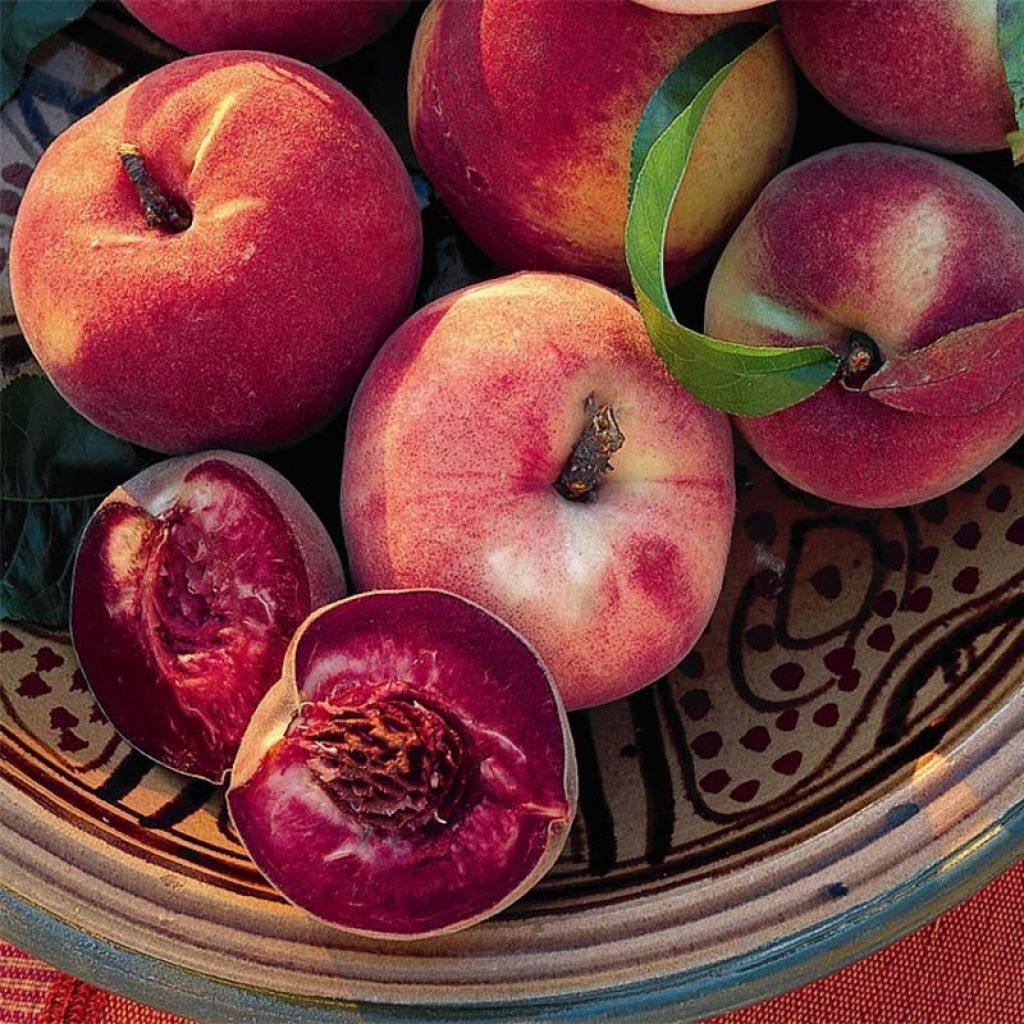

Prunus persica Sanguine de Savoie Peach - Peach Tree
Prunus persica Sanguine de Savoie Peach - Peach Tree
Prunus persica Sanguine de Savoie
Peach, Peach tree
Why not try an alternative variety in stock?
View all →This plant carries a 6 months recovery warranty
More information
We guarantee the quality of our plants for a full growing cycle, and will replace at our expense any plant that fails to recover under normal climatic and planting conditions.
From €7.90 for pickup delivery and €6.90 for home delivery
Express home delivery from €8.90.
Description
The Sanguine de Savoie Peach is a late, self-fertile variety. Its medium-sized round peaches are dark red and fuzzy. The white flesh turns blood-red when the fruit is picked at its peak, juicy, tangy, and fragrant. They are ideal for making jams, compotes, preserves, and even for eating fresh. Harvest takes place in September when the fruit is ripe. Hardy variety.
The species name "persica" was given to the peach, which was thought to originate from Persia. In reality, all cultivated forms of peaches are native to northern China. Its appearance in Europe occurred in the 6th century and experienced significant development in the 19th century. From then on, numerous selections aimed at improving the fruit's taste qualities took place. The Sanguine de Savoie Peach is a French variety.
Like many fruit trees, the Sanguine de Savoie Peach prefers light, rich, and deep soils. It does not tolerate excessive water or heavy and compact soils well. A sunny location sheltered from the wind will protect the flowering and aid in fruiting.
It is a tree with an upright habit, indicating a tall trunk with numerous vertically growing branches, giving it an elegant, slender silhouette. Its deciduous foliage is a bright green and emits a slight almond scent. Its leaves are long, measuring 8 to 15 cm (3 to 6in) in length and 3 to 4 cm (1 to 2in) in width, with short petioles.
Its pale pink flowering occurs in late March or early April, making it suitable for cultivation in regions north of the Loire River. The flowers are hermaphroditic and self-fertile.
The fruiting results in medium-sized, dark red round peaches. The white flesh turns blood-red when the fruit is picked at its peak, juicy, tangy, and fragrant. This tree does not require excessive maintenance and tolerates pruning well.
Peaches can be enjoyed raw, cooked, sweet, savory, flambéed, frozen, or thawed. They pair well with wine and certain meats, such as duck. They can be found in numerous recipes, including jams, compotes, and pastries.
For transport reasons, our tallest scions may be pruned before shipment. They are suitable for all common training forms: cordons, espaliers, goblets, half-standards, and low standards, except for high standards. If you would like more information or advice on training your fruit trees, please do not hesitate to contact us.
This fruit tree is delivered in a "ready-to-plant" root ball. During planting, the root ball should be planted as is. The biodegradable netting surrounding the root ball, which preserves the rootlets, will decompose on its own during the plant's growth. By doing so, you ensure better establishment.
Prunus persica Sanguine de Savoie Peach - Peach Tree in pictures
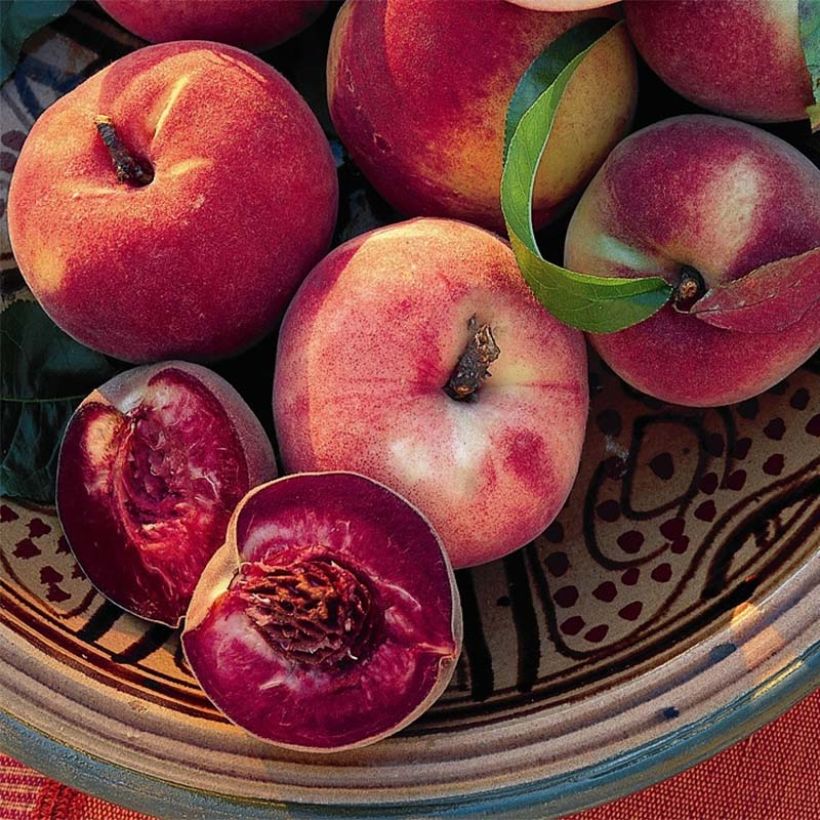

Plant habit
Fruit
Flowering
Foliage
Botanical data
Prunus
persica
Sanguine de Savoie
Rosaceae
Peach, Peach tree
Western Europe
Other Peach and Nectarine trees
View all →Planting and care
The Sanguine de Savoie Peach is preferably planted from October to December. Dig a hole two to three weeks before planting, twice as wide and deep as the pot. On the day, place the tree with its pot in a basin of water, so as to moisten the entire root ball by capillarity. Add compost to the bottom of the hole. Place the tree in the hole, fill with a mixture of soil and compost. Gently compact around the base of the fruit tree as you fill, the roots should be in close contact with the soil. The root ball should be completely covered. Water generously.
The Sanguine de Savoie Peach has a semi-pivot root system. It will thrive in fairly deep soils. It also prefers a light and well-draining soil.
Planting period
Intended location
Care
Planting & care advice
Ancient and local varieties
Haven't found what you were looking for?
Hardiness is the lowest winter temperature a plant can endure without suffering serious damage or even dying. However, hardiness is affected by location (a sheltered area, such as a patio), protection (winter cover) and soil type (hardiness is improved by well-drained soil).

Photo Sharing Terms & Conditions
In order to encourage gardeners to interact and share their experiences, Promesse de fleurs offers various media enabling content to be uploaded onto its Site - in particular via the ‘Photo sharing’ module.
The User agrees to refrain from:
- Posting any content that is illegal, prejudicial, insulting, racist, inciteful to hatred, revisionist, contrary to public decency, that infringes on privacy or on the privacy rights of third parties, in particular the publicity rights of persons and goods, intellectual property rights, or the right to privacy.
- Submitting content on behalf of a third party;
- Impersonate the identity of a third party and/or publish any personal information about a third party;
In general, the User undertakes to refrain from any unethical behaviour.
All Content (in particular text, comments, files, images, photos, videos, creative works, etc.), which may be subject to property or intellectual property rights, image or other private rights, shall remain the property of the User, subject to the limited rights granted by the terms of the licence granted by Promesse de fleurs as stated below. Users are at liberty to publish or not to publish such Content on the Site, notably via the ‘Photo Sharing’ facility, and accept that this Content shall be made public and freely accessible, notably on the Internet.
Users further acknowledge, undertake to have ,and guarantee that they hold all necessary rights and permissions to publish such material on the Site, in particular with regard to the legislation in force pertaining to any privacy, property, intellectual property, image, or contractual rights, or rights of any other nature. By publishing such Content on the Site, Users acknowledge accepting full liability as publishers of the Content within the meaning of the law, and grant Promesse de fleurs, free of charge, an inclusive, worldwide licence for the said Content for the entire duration of its publication, including all reproduction, representation, up/downloading, displaying, performing, transmission, and storage rights.
Users also grant permission for their name to be linked to the Content and accept that this link may not always be made available.
By engaging in posting material, Users consent to their Content becoming automatically accessible on the Internet, in particular on other sites and/or blogs and/or web pages of the Promesse de fleurs site, including in particular social pages and the Promesse de fleurs catalogue.
Users may secure the removal of entrusted content free of charge by issuing a simple request via our contact form.

































